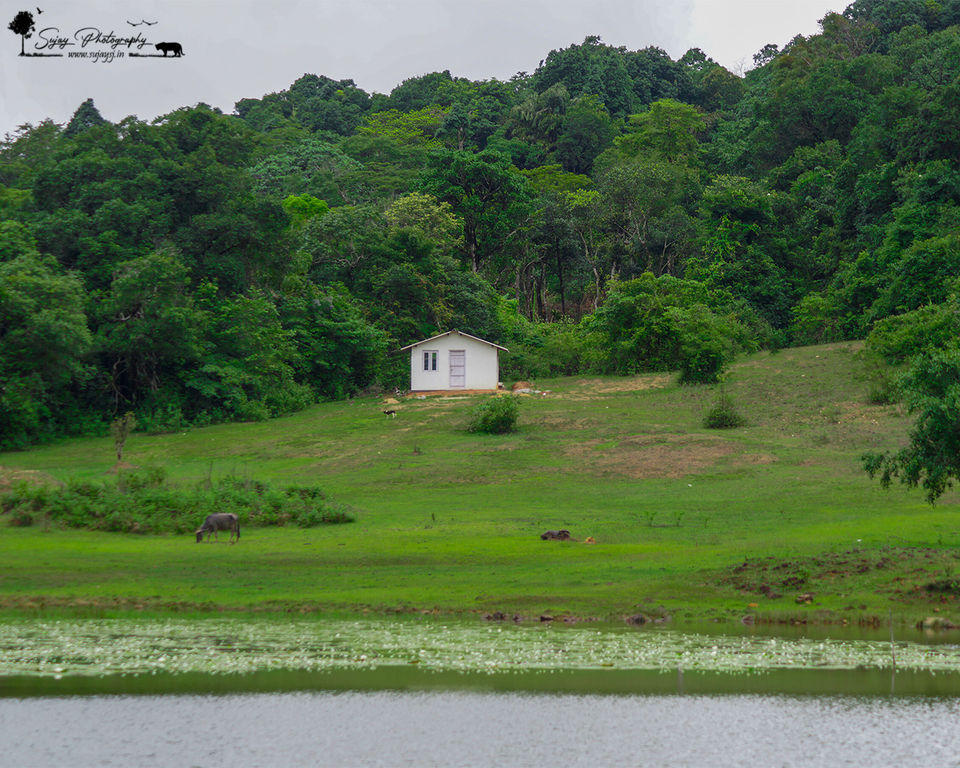
Imagine you are travelling in South India and have arrived at a random place. It suddenly starts pouring and rain water streams flow either side of you. Would you be curious to know where does the rain water finally end up. How about if you can precisely tell which rain stream water ends up in in the Arabian Sea and which one ends up in Bay of Bengal? Sounds interesting?
Welcome to Karnataka!
Mankanahalli Village
Situated close to mesmerizing Bisle Forest, Mankanahalli is a small, quaint village/hamlet with a population of just around 250 as per the 2011 census. Bisle is a small village in the heart of south-western India's Western Ghats. It is quite popular amongst trekkers and explorers who love trekking to nearby peaks and dozens of seasonal waterfalls. The adjoining Bisle Reserve Forest, is a dense rain forest that is home of king cobras, tigers (rarely seen), Sambar deer, peacocks, numerous species of birds, Spotted deer, brown fox and Mahseer fish, not to mention a number of flora and fauna which can only be found in this region of Western Ghats.
Near to the forest check post, lies a unique place called Mankanahalli Ridge. There you’ll find a stone laid on a concrete platform with mention of the Arabian Sea and Bay of Bengal on it. The stone was laid by British officers who during a topographical survey of the Western Ghats found that this was the point where rain water splits and reaches two different seas.
The rain water streams and rivulets from the series of hills and mountains to the left of this point flow or join the Kumaradhara and Nethravathi rivers, the west draining basin that eventually drains out into the Arabian Sea.
The rain water from the right side of the ridge, join the various tributaries of the Hemavathi River, the east draining basin. The Hemavathi River itself is a tributary of the Cauvery River which flows further down south eventually draining into the Bay of Bengal.
How to reach here?
By Air - The Mangalore International Airport, located about 125kms away is the nearest airport
By Rail - The Sakleshpur Railway Station located about 45kms away is the nearest rail head and is connected with trains from Bengaluru and Mangaluru.
By Road - Easily the recommended mode, the drive to Mankanahalli from Sakleshpur is mesmerizing with stunning views all around. Mankanahalli is about 85 kms from District headquarters - Hassan. Alternatively, you can travel from Mangalore by road and this route is also equally scenic.
Other places of interest nearby
Although Bisle is a State Reserved forest, it is extremely dense and not a regular spot for tourists. You may need a guide to help you navigate through the routes filled with a thick maze of trees and often may find yourself covered in low clouds affecting your visibility.
Bisle Ghat View Point
Around 5 km from Bisle towards Kukke Subramanya there is picturesque spot called Bisle Betta or Bisle View Point. From here you can get to see panoramic views of the Western Ghats and also see the mountain ranges of 3 districts: Kumara Parvatha (1319 m) of Dakshina Kannada district, Pushpagiri (1712 m) and Dodda Betta (1119 m) of Kodagu district and Patta Betta (1112 m) and Enni Kallu (900 m) of Hassan district.
Kumara Parvatha
Kumara Parvatha is the 4th highest peak in Karnataka state and the trek to summit is considered as one of the toughest in the state. The trek covers a distance of around 25 kilometers and is usually done over 2 days. The trek starts from the famous Kukke Subrahmanya Temple that is located about 10 kms away. The temple itself is one of the most sacred temples of Karnataka and is visited by thousands of devotees from all over the country.
Apart from the various trekking spots, there are tons of waterfalls to see nearby including the popular ones such as Mallalli Falls and Abbimatta Falls. There are various other seasonal waterfalls seen only during the monsoon season.
Happy Exploring!

